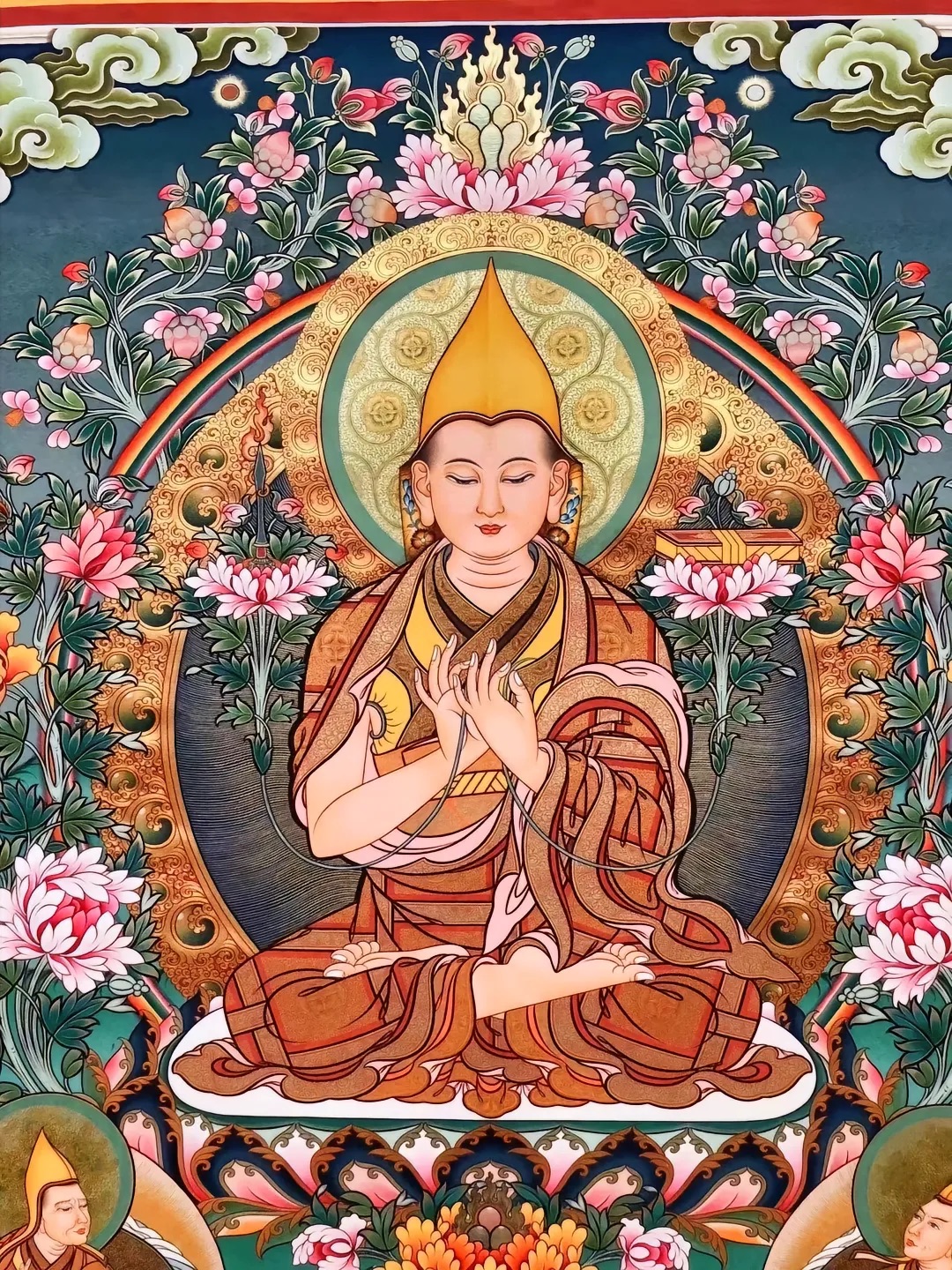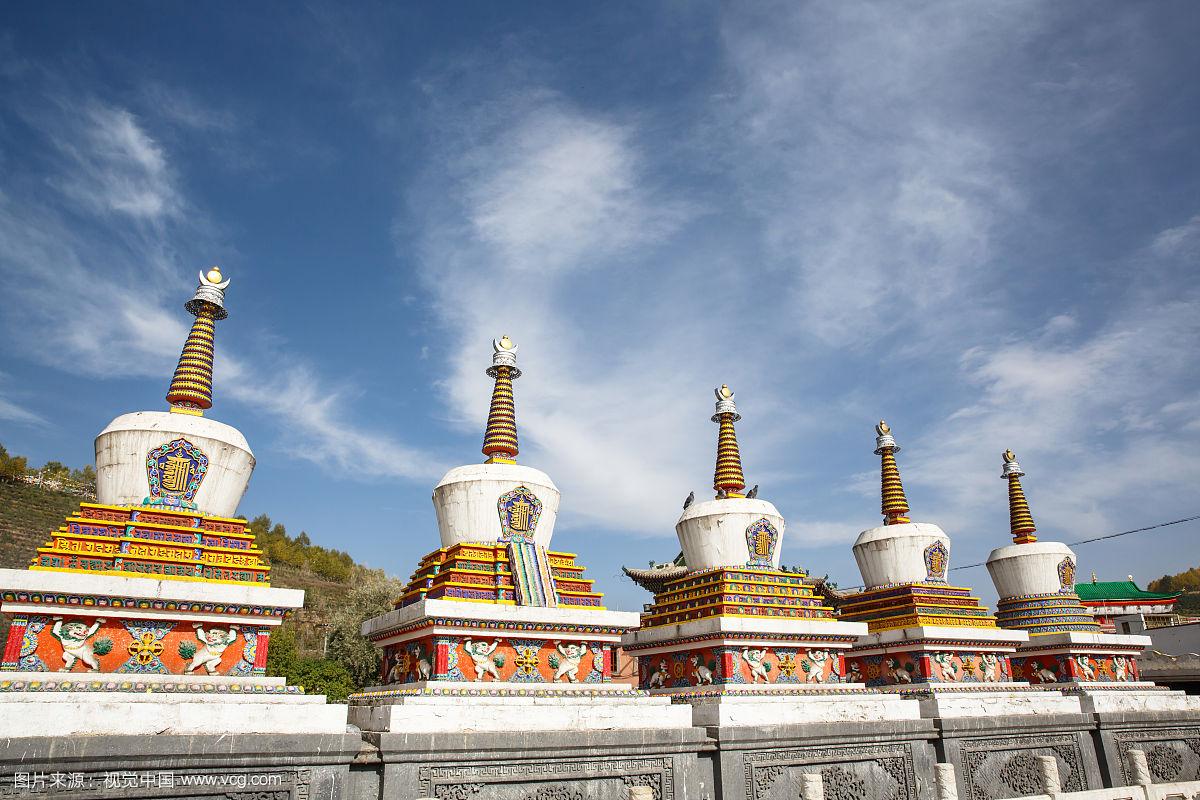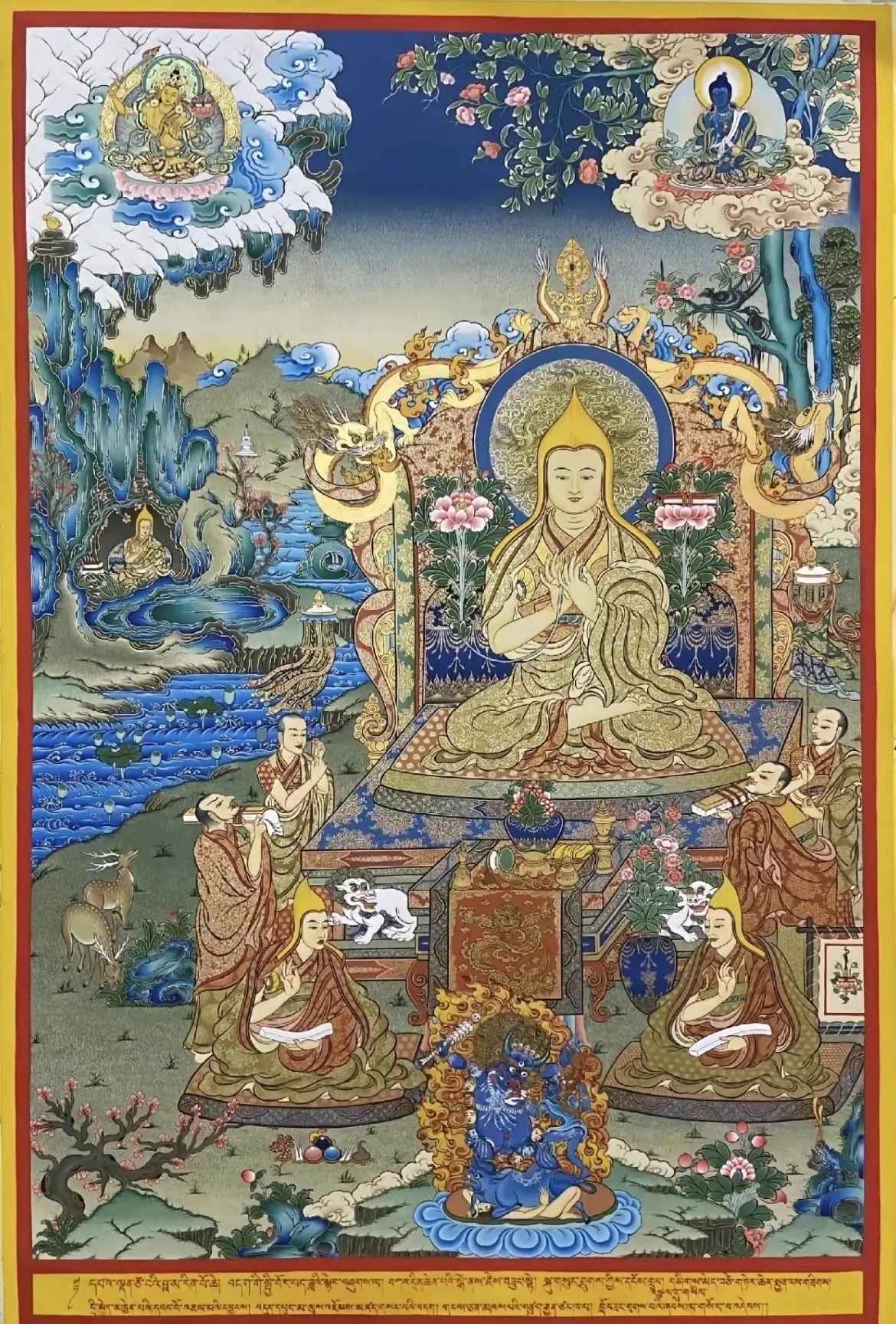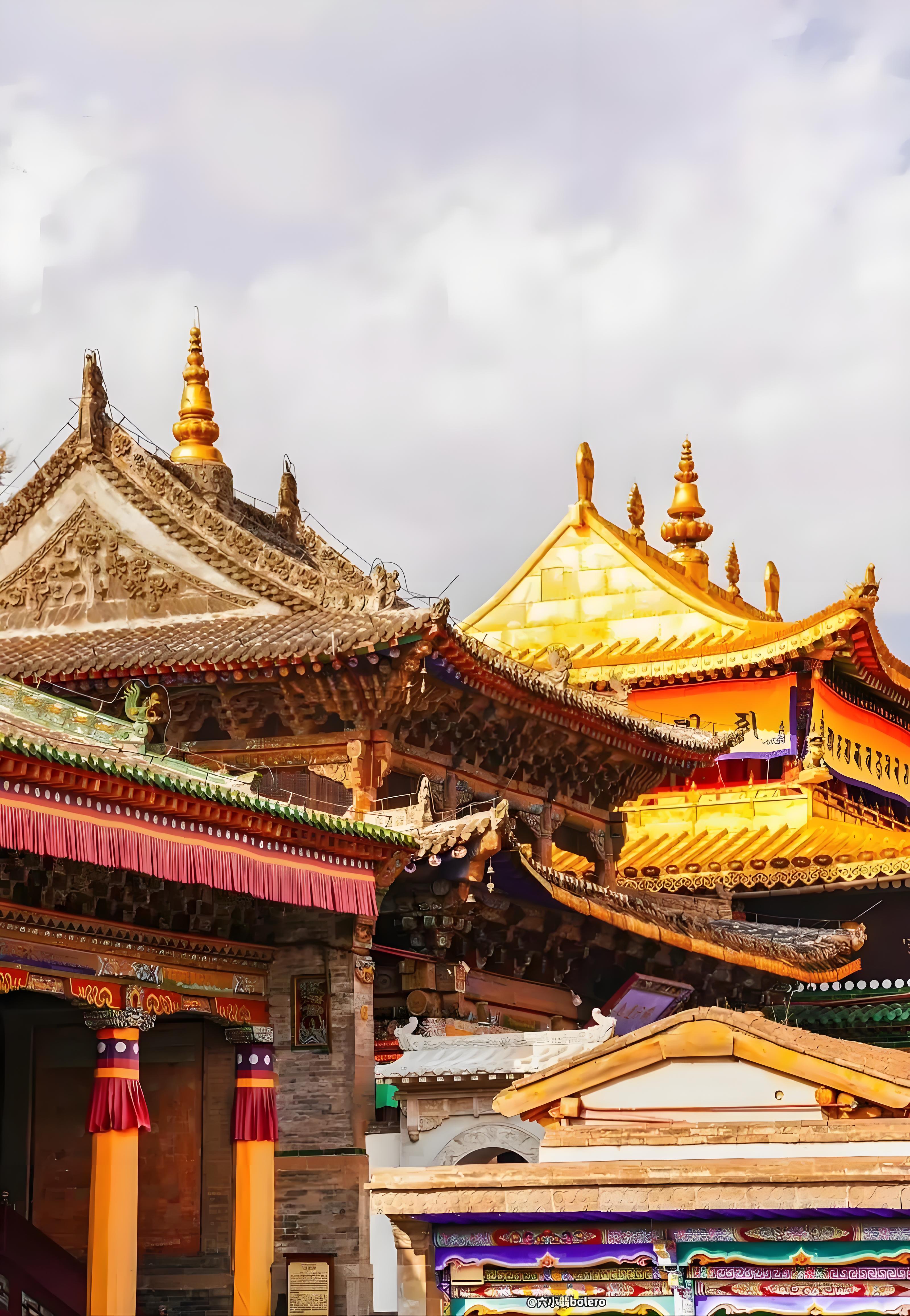Introduction
Tsongkhapa, also known as Je Tsongkhapa, was a towering figure in Tibetan Buddhism. He was a renowned scholar, philosopher, and spiritual master, whose influence continues to resonate centuries after his passing. Born in the 14th century, Tsongkhapa is best known as the founder of the Gelug school, also known as the “Yellow Hat” school, which became the dominant force in Tibetan Buddhism. His life and teachings offer a profound path to enlightenment, combining rigorous intellectual study with deep meditative practice. This article will delve into the life, philosophy, and lasting impact of this remarkable figure.
Early Life and Education
Tsongkhapa was born in 1357 in the Amdo region of Tibet, an area now part of Qinghai Province, China. His birth was marked by auspicious signs, with local monks bringing gifts to his family, indicating the birth of a special child. He was given the name Losang Drakpa. At the young age of three, Tsongkhapa began his monastic training with Choje Dhondrup Rinchen. He was ordained as a novice monk at the age of seven. His exceptional intelligence was evident from an early age. When he turned sixteen, Tsongkhapa journeyed to Central Tibet to further his studies, which was an important step in his development as a Buddhist scholar.
He studied at major monastic institutions, absorbing the teachings of various Buddhist traditions. Tsongkhapa was exposed to diverse lineages such as the Sakya and Kagyu schools. He also became acquainted with all the major schools of Buddhism in Tibet. This broad exposure shaped his unique approach to Buddhist philosophy and practice. Tsongkhapa’s knowledge of different schools allowed him to create a synthesis of the most important teachings. This knowledge served as the base for his school of Tibetan Buddhism.
Retreats and Visions of Mañjuśrī
A key part of Tsongkhapa’s development was his period of intensive retreat and meditation. During these retreats, Tsongkhapa had profound visions of Mañjuśrī, the Bodhisattva of Wisdom. These visions guided his spiritual journey and provided answers to his inquiries about emptiness. Mañjuśrī instructed him on the importance of not being partial to either emptiness or appearance. He was taught to take both aspects seriously. These visions played a crucial role in shaping Tsongkhapa’s understanding of Buddhist philosophy. Moreover, it provided the guidance and inspiration for his later works and teachings.
Tsongkhapa’s Philosophical Contributions
Tsongkhapa’s philosophical contributions are a synthesis of various Buddhist traditions. His work draws heavily from the Madhyamaka philosophy of Nagarjuna and Chandrakirti. In addition, he was influenced by the epistemological traditions of Dignaga and Dharmakirti. He emphasized the importance of rigorous reasoning and logic in understanding Buddhist teachings. He believed that meditation must be paired with philosophical inquiry. Tsongkhapa is known for his detailed analysis of emptiness (sunyata). He explained that all phenomena lack intrinsic existence. Instead, they exist interdependently and relationally. However, this view of emptiness is not a nihilistic denial of existence. Instead, it is a recognition that things exist conventionally, without inherent essence.
Tsongkhapa’s philosophy seeks to reconcile the concept of emptiness with the reality of our everyday experiences. This provided a balanced and nuanced approach to understanding the nature of reality. He also developed a hermeneutics to uphold the authority of moral statements. He reconciled the philosophy of emptiness with the necessity for ethical practice. He stressed that the concept of emptiness does not negate the importance of moral action.
The Founding of the Gelug School
Tsongkhapa’s activities led to the formation of the Gelug school of Tibetan Buddhism. This school is also known as the “Yellow Hat” school. The Gelug school is known for its emphasis on monastic discipline, philosophical study, and tantric practice. Tsongkhapa’s focus on these elements revitalized Buddhism in Tibet. The Gelug school is structured around a monastic system that promotes rigorous learning and ethical behavior. The Gelug school became the most prominent school in Tibet and continues to be highly influential today. The Dalai Lama is the most well-known leader of the Gelug tradition.
The Gelug school traces its origins to Buddha Shakyamuni. It is also seen as a revival of the earlier Kadampa school. Tsongkhapa patiently taught his followers everything they needed for spiritual development. He emphasized the importance of study, critical reflection, and meditative practice. He was considered a model of moral discipline, compassion, and wisdom. This has inspired many to follow the Gelug path. Tsongkhapa’s followers became known as the “New Kadampas.”
Key Teachings and Texts
Tsongkhapa’s teachings are vast and comprehensive, covering all aspects of the Buddhist path. His most influential works include:
The Great Treatise on the Stages of the Path to Enlightenment (Lamrim Chenmo): This text is one of the most renowned works in Tibetan Buddhism. It provides a detailed guide to the Mahayana path to enlightenment. The Lamrim Chenmo outlines the stages of spiritual development for those seeking enlightenment. It distills the essence of the sutra scriptures into a practical manual. It is a crucial text for both scholars and practitioners.
The Great Exposition of Tantra (Ngagrim Chenmo): This work is a comprehensive guide to tantric practice within the Gelug t[15]radition. It explores the profound and transformative practices of Vajrayana Buddhism. This text is essential for understanding the tantric aspects of the Gelug path.
Essence of Eloquence: Also known as Legs bshad snying po, it’s a commentary on Madhyamaka philosophy. It clarifies the correct understanding of emptiness. It is a fundamental text for understanding Tsongkhapa’s philosophical views.
These texts are the foundation of Gelugpa study. They showcase Tsongkhapa’s unique ability to combine complex philosophical ideas with practical guidance. Tsongkhapa’s writings also emphasizes the importance of integrating both sutra and tantra teachings. This integration is key to achieving full enlightenment within the Gelug tradition.
Tsongkhapa’s Emphasis on Practice
Tsongkhapa stressed that intellectual understanding must be coupled with practical application. He emphasized that the path to enlightenment involves not only philosophical reasoning but also rigorous meditative practices. For him, meditation and reasoning are essential tools that work together. This leads to a breakthrough in cognitive fluency and insight. He was also a master of tantric yoga. Tsongkhapa emphasized that tantra was based on the same view of emptiness as the Mahayana sutras. This shows that for him, tantra is a subset of Mahayana Buddhism.
Tsongkhapa outlined the importance of cultivating bodhicitta, the altruistic aspiration to attain enlightenment for the benefit of all beings. He emphasized the practice of the six perfections: giving, ethics, patience, joyous effort, concentration, and wisdom. These are the core aspects of the bodhisattva path. He also emphasized the three principles of the path: renunciation, bodhicitta, and the correct view of emptiness. These principles are at the heart of his teachings.
Legacy and Influence
Tsongkhapa’s legacy is immense, and he remains one of the most revered figures in Tibetan Buddhism. His contributions to Buddhist thought and practice continue to inspire countless practitioners. His teachings have helped shape the intellectual and spiritual landscape of Tibetan Buddhism. His influence extended beyond Tibet to Mongolia and other parts of Central Asia. Tsongkhapa’s works continue to be studied in monasteries and universities worldwide. His teachings offer practical wisdom and profound insights. He remains relevant to both contemporary scholars and practitioners.
Tsongkhapa’s Ganden tradition has spread across the world. His teachings have shaped intellectual conversations and ethical practices globally. The Dalai Lama considers Tsongkhapa a second Nagarjuna, highlighting his importance. Tsongkhapa’s life and teachings serve as a powerful testament to the transformative potential of Buddhist philosophy and practice. He has influenced the trajectory of Buddhism in countless ways.
Conclusion
Tsongkhapa was a remarkable figure whose life and teachings offer profound wisdom and guidance on the path to enlightenment. His legacy extends far beyond his own time. He was a scholar, philosopher, and spiritual master, whose impact on Tibetan Buddhism is still felt today. His synthesis of philosophical study, meditative practice, and ethical conduct provides a comprehensive path to awakening. Through his profound insights and teachings, Tsongkhapa continues to inspire those who seek to understand the nature of reality and find a meaningful way of life. His emphasis on both wisdom and compassion serves as a light for those seeking to walk the path to enlightenment. Tsongkhapa’s contributions to Buddhist philosophy and practice makes him an essential figure in Buddhist history.
If you found this article insightful, please share it with others who may be interested in learning about Tsongkhapa and Tibetan Buddhism. Leave a comment below and tell us what you found most interesting about his life and teachings.




